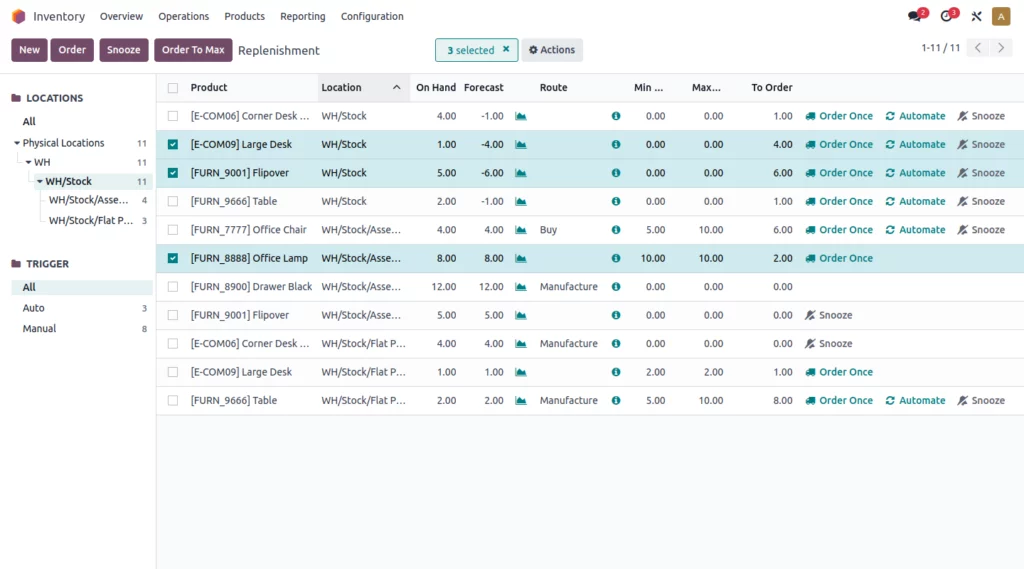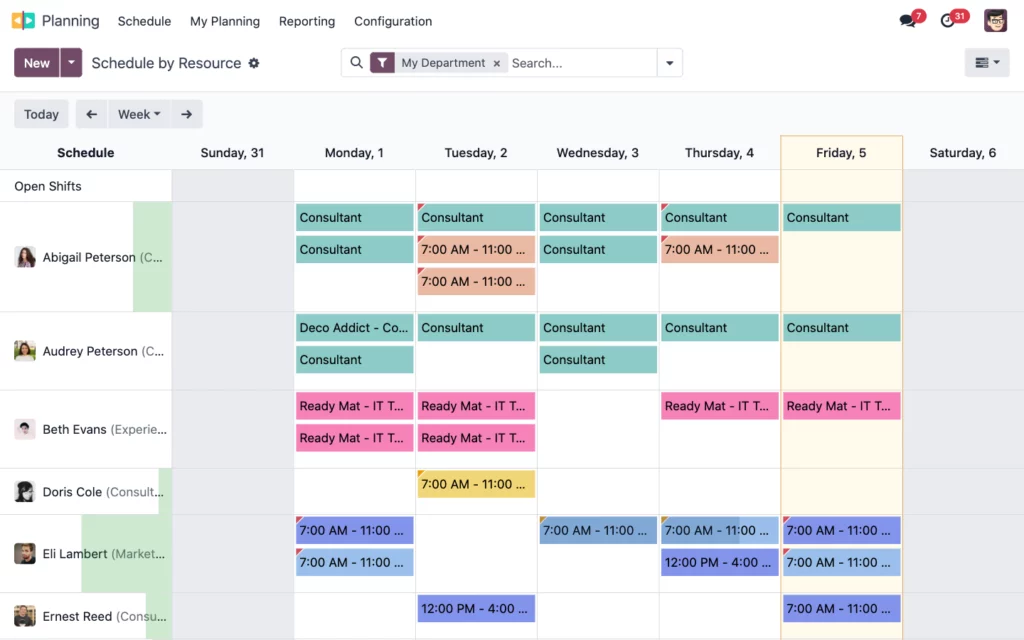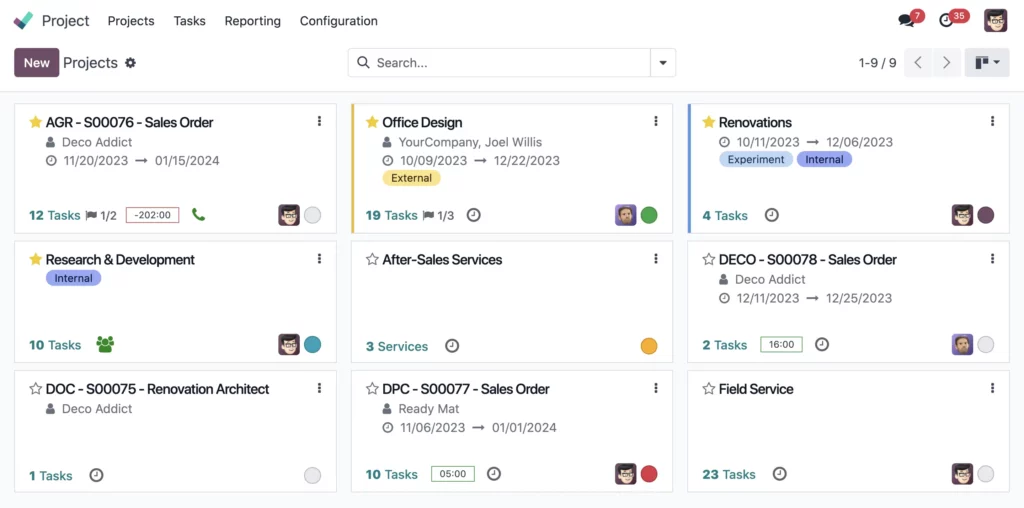Odoo is a widely adopted open-source ERP system offering a comprehensive suite of modules for managing various business processes, such as sales, procurement, accounting, and inventory management. Leveraging Odoo as a foundational platform can significantly reduce the cost of developing bespoke software; however, this approach requires a nuanced evaluation of both the benefits and the associated risks. This article explores how Odoo can influence development costs and outlines key considerations for its effective use.
At a Glance

Benefits of Using Odoo to Reduce Costs
Numerous case studies and real-world implementations at Software Planet Group suggest that Odoo can substantially lower software development expenses compared to building an application from scratch. One of the primary advantages is the availability of a vast ecosystem of prebuilt modules—over 1,000 in total—covering a wide range of standard business operations. By deploying modules such as CRM, accounting, or warehouse management, organisations can avoid redundant development work, saving both time and resources.
As an open-source system, Odoo also grants full access to its codebase, enabling businesses to adapt the software to their specific requirements. This level of flexibility is often more cost-effective than developing equivalent features independently. Furthermore, Odoo’s scalability allows companies to begin with essential modules and expand gradually, adapting to growth and evolving needs with minimal disruption.
Technical Overview
Odoo’s architecture is based on a modern three-tier design: the presentation layer, the application layer, and the data layer. The presentation layer operates as a single-page application (SPA) built with HTML5, JavaScript, and CSS. Recent versions have adopted the OWL component framework for rendering, although legacy JavaScript widgets remain supported for backward compatibility.
The application layer is written in Python and follows the Model-View-Controller (MVC) architectural pattern. Business logic is encapsulated in modular structures, with each module comprising Python code and XML definitions for models, views, menus, and reports. A proprietary Object Relational Mapping (ORM) layer connects these modules to PostgreSQL, which is the only officially supported database. This ORM supports inheritance, constraints, and automatic schema generation.
On the client side, Odoo functions entirely as an SPA, optimising performance by dynamically updating interface components and retrieving only the necessary data. From version 15 onwards, the system has migrated to a component-based architecture built with OWL. User interface templating is handled by QWeb, which uses XML templates along with CSS and JavaScript assets located in the web/static/src directory.
Odoo supports integration and data exchange through built-in JSON-RPC and XML-RPC protocols. For headless deployments—such as those using front ends built with React or Vue, or for mobile and IoT systems—custom REST API endpoints can be created to allow seamless interaction across diverse platforms.
Infrastructure-wise, Odoo typically runs behind a web server such as Nginx or Apache. The main application is a Python-based process that loads modules and enforces business rules at runtime. It supports multi-tenancy, allowing several databases to operate within a single instance. In more complex environments, Odoo can be integrated with IoT devices, point-of-sale (POS) terminals, and mobile clients, and it supports report generation using tools such as Webkit, LibreOffice, and JasperReports.
Key supporting technologies include XML (for model definitions, workflows, and views), CSS/SCSS (for styling), and JavaScript (OWL components or legacy widgets). Odoo also supports responsive design and headless integrations via API.
The latest stable release is Odoo 18, launched in October 2024. It is available in two editions: the Community Edition (under the GNU LGPLv3 licence) and the proprietary Enterprise Edition, which follows an open-core model introduced in version 9.

Potential Risks and Pitfalls
Cost of Customisation
Although Odoo provides a rich set of prebuilt modules, adapting the system to fit highly specific business needs can be both complex and expensive. When existing functionality is insufficient, additional development may be necessary to extend or override the base system. This not only raises the initial implementation costs but also results in ongoing maintenance obligations, as custom code must be updated and tested with each new Odoo release.
Support and Maintenance
While Odoo’s frequent updates enhance functionality and security, they can also lead to compatibility issues with customised modules. Businesses often need to allocate resources to test and adapt these modules with each update. The Community Edition is supported primarily by the open-source community, which may not meet the needs of companies requiring immediate or advanced assistance. In such cases, investing in the Enterprise Edition—with its official support and additional features—can increase the overall cost of ownership.
Lack of Backward Compatibility
Odoo does not always ensure backward compatibility between major versions. Upgrading may necessitate comprehensive migration of both code and data, which can be time-consuming and costly. This is especially relevant for businesses with heavily customised systems, where even minor version changes can disrupt core functionality and demand extensive redevelopment.
Potential for Defects and Limitations
Despite its growing maturity, Odoo is still under active development. Some modules—particularly those targeting niche sectors or newly introduced—may contain incomplete features or unresolved bugs. While the platform is continuously improving, businesses should be cautious about relying on under-tested modules for critical operations. In such cases, additional quality assurance and contingency planning are recommended.
Comparative Analysis: Odoo vs. Custom Development
| Aspect | Odoo (with customisation) | Fully Custom Development |
|---|---|---|
| Initial cost | Low for standard modules; higher with customisation |
High, due to full feature development |
| Time to deployment | Fast for default modules; slower if customised |
Slower, owing to complete development process |
| Maintenance & updates | Requires adaptation effort for future upgrades |
Full control, but needs dedicated support |
| Flexibility | High, but limited by Odoo architecture |
Maximum, though resource-intensive |
| Risk profile | Upgrade compatibility, learning curve |
High initial cost and longer timelines |
This table illustrates that Odoo is a cost-effective choice for organisations whose requirements align with its out-of-the-box modules. Analysts at Software Planet Group recommend the following guideline: Odoo can be considered a suitable foundation for development if the planned customisations do not exceed 30% of the functionality provided by the base system. Strategic planning and a clear understanding of future needs are therefore essential to achieving success.
Recommendations for Businesses
To fully realise the economic benefits of Odoo, businesses should begin with a comprehensive analysis of their operational needs, identifying where prebuilt modules can be used directly and where customisation may be justified. Budgeting should include not only implementation costs but also those associated with ongoing maintenance, platform updates, and staff training. Investing in internal capabilities—particularly training—can mitigate support costs and accelerate the transition.

Conclusion
Using Odoo as a codebase for custom software development can deliver significant savings, especially for small and medium-sized enterprises that can leverage its existing capabilities. The platform’s modular design, scalability, and open-source flexibility offer a compelling alternative to building systems from scratch. However, successful adoption requires careful planning, clear expectations, and an informed approach to managing the risks associated with platform upgrades and custom development.



